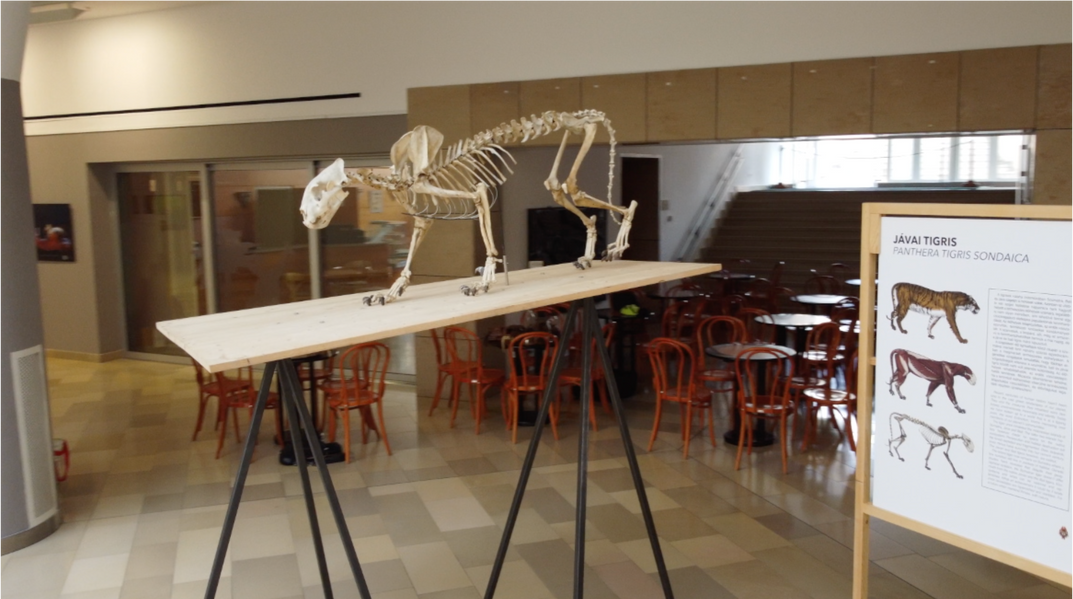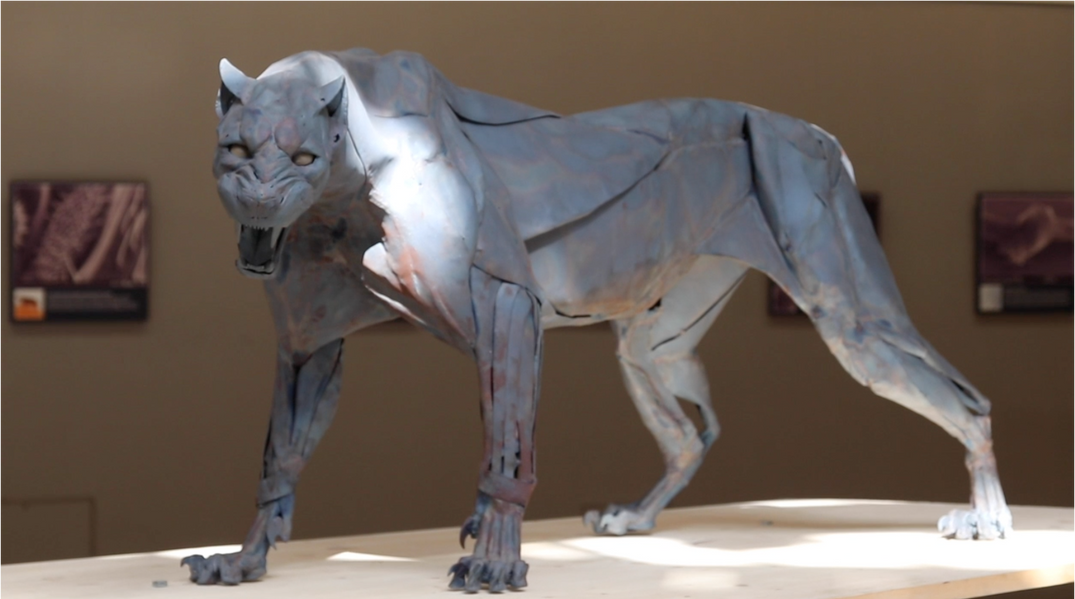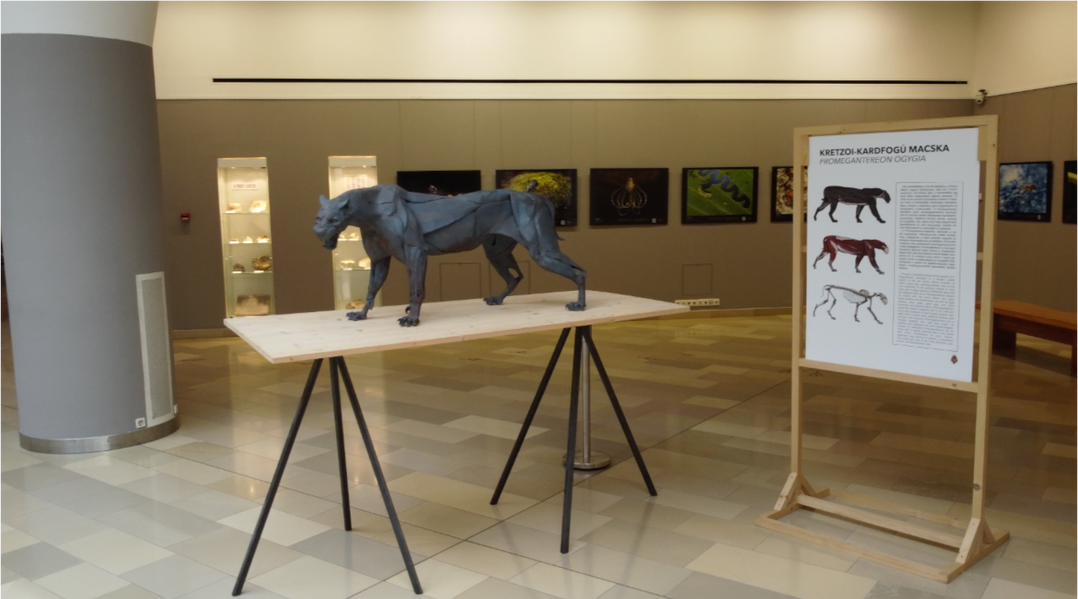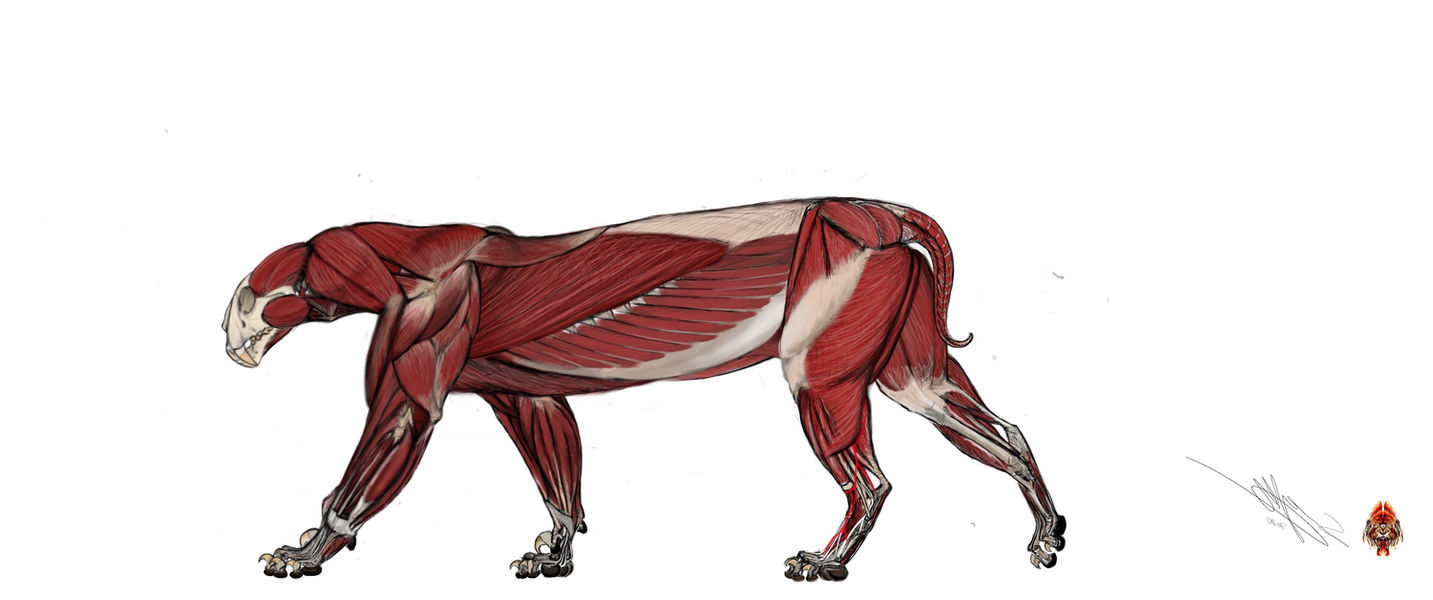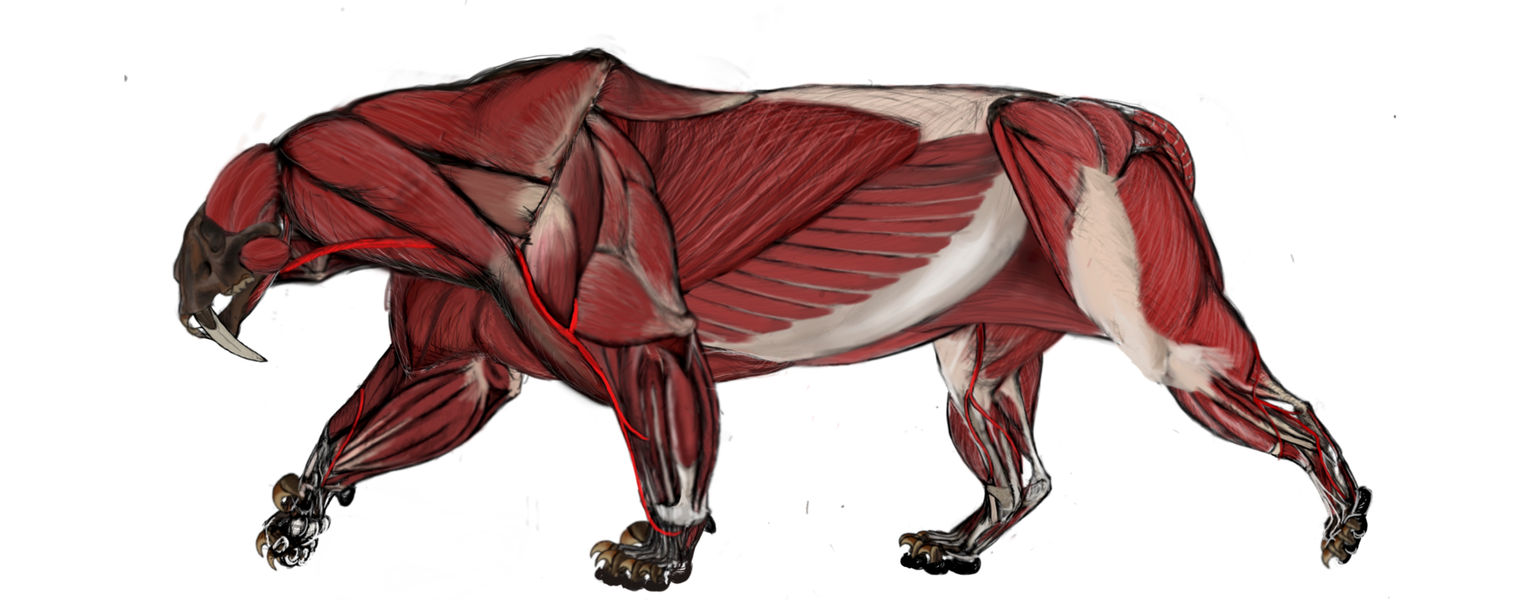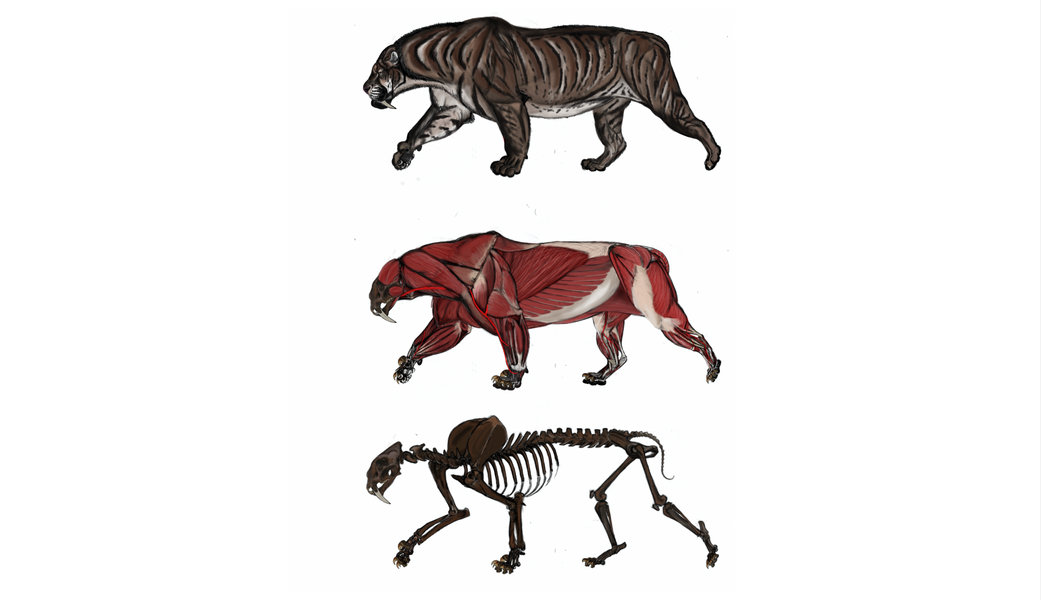A JOURNEY OF RECONSTRUCTION.

I extend my gratitude to the Budapest Museum of Natural History,
Who’s collaboration made possible accesses to osteological material and curation of the following exhibit.
PANTHERA ONCA
The jaguar
Though smaller than the lion and the tiger the jaguar is very powerful and has the strongest bite force of any cat alive today.
Stout canine teeth and a robust build allow the jaguar to exploit a wide range of foods and habitats. Unlike most cats who are aimed at the throat, the jaguar’s conical canine teeth and wide head allow it to deliver a crushing bite to the skull.
Across South and central America, the jaguar is a force that creates stability and balance in the ecosystems it inhabits. Today the jaguar and the forests inhabits are under threat. Climate changes, negligent land use, wildlife trade and poaching are dismantling webs of interactions that sustain life on OurPlanet.
PANTHERA TIGRIS SONDAICA
The Javan tiger
Today we have woken to a world at a tipping point, the word Extinction, looms menacing over members of our planet’s communities.
Recent centuries of human history hasn’t been kind to the vast green landscapes of our planet. They and the creatures they inhabited were destroyed, unconsciously, inexorably and silently.
The Tiger once inhabited the Indonesian islands of Sumatra, Java and Bali. The later two island’s history made no space for the native ecosystem. Persecution and habitat destruction left the forest depleted and fragmented. Deer, leopards, even rhinos have survived into our current century. The Javan and Bali tigers however, are extinct.
The island tiger now remains on Sumatra. Where a few hundred still live in pockets of habitat. Genetic studies have revealed that despite their geographical isolation, the Sumatran tiger differs little from the native Javan and the Bali tigers. Ecosystems and lands can be restored and replenished. What an achievement it could be if lands once devastated are replenished and rewilded. A future where mankind thrives, with nature.
PANTHERA UNCIA
the snow leopard
First photographed in November 1971 the sheer elusiveness of this cat has captured the world’s imagination. Across its range accounts of the snow leopard’s presence are mythical and steeped in legends. Today however, technology and the understanding of natural history, bring this magnificent cat closer than ever.
Native to the rocky terrains of the Tibetan plateau and Himalayas the snow leopard is adept at living in the mountains. Recent studies and footage reveal the snow leopard’s incredible capabilities. Tick fur, large paws, long tail and a light figure make the snow leopard a very potent and nimble hunter, chasing, yaks, argali sheep, and ibex across sheer cliffs and steep ravines.
Today better understood, the snow leopard is a crucial member of a fragile mountain ecosystem that includes shepherds and wildlife alike. Preserving the snow leopard means protecting local livelihoods, ecosystems and celebrating the diversity of life forms on our planet.
The marsupial sabertooth
THYLACOSMILUS ATROX
Despite its superficial resemblance with saber-toothed cats, Thylacosmilus was not a cat and is most closely related to today’s South American opossums.
When South America rifted away from Africa 135 million years ago, the continent remained in complete isolation until 3 million years ago. A group of opossum like animals called sparrassodonts diversified and came to dominate the ecosystems as top carnivores.
One of the sparrassodonts lineages gave rise to a saber-toothed form. With ever growing canines that root behind the eyes, a powerful neck, robust forelimbs and a chin sheath to protect its teeth, Thylacosmilus was a very odd-looking animal.
Despite its unusual shape Thylacosmilus was brilliantly adapted to withstand large forces applied across its body. A long and robust neck, flexible limb joints suggest its ability to grapple with large prey, which once immobilized were killed with a precise, piercing bite.
PROMEGANTEREON OGYGIA
Sabre-toothed cat ancestor
Though it resembles today’s living leopard, promegantereon belonged to a deeper, earlier branch of the cat family.
Across Eurasia 13 million years ago, promegantereon was at the very beginning of the glorious history of cats. Cats had to adapt quickly to efficiently take hold and dispatch their prey.
Promegantereon shared its habitat with the much larger, lion sized sabertothed cat machairodus, as well as large hyenas, bear dogs, giant pigs and other ferocious, late Miocene fauna. Promegantereon, much like today’s leopards had to be swift and live in the shadows of much larger than itself.
With a longer neck, flattened canines and strongly built forearms Promegantereon was a stronger grappler than cats alive today. Its canines were flattened and more bladed. Instead of suffocating Promegantereon did its killing with a ripping shearing bite to the throat after firmly immobilizing it’s prey.
Promegantereon was starting to perfect a movement that would give rise to the most fearsome cats known, the sabertoothed cats.
SMILODON FATALIS.
North American Sabertoothed Cat.
Mention “Saber-tooth”, this is the real animal behind the icon .
Found in the thousands at the La Brea Tar Pits in Los Angles, Smilodon, is California’s state fossil. Though undeniably a cat, Smilodon is from a deeper, more ancient lineage of felids than the modern lions, tiger, jaguars and leopards.
Though about the size of a modern lion, Smilodon was built differently, heavier and much more robust than any big cat today. Thick, stout forearms and shoulders, a long and muscular neck, flexible hands with large claws made Smilodon a very potent stalker, grappler and subdued of large prey.
Bison, horses, camels, ground sloths and young mammoths were all potential prey for Smilodon who might have hunted in family groups or pairs. Once wrestled and pinned, the victim would be quickly dispatched with a precise, shearing bite to the throat.
Smilodon was a very successful ambush predator, thriving in North and south America alongside lions, dire wolves and giant short faced bears until end of the last ice age 12,000 years ago.
PANTHERA LEO ATROX
The Americans lion.
Lions in Africa, lions in Europe, lions in Northern Asia and lions in North America. 200,000 years ago, lions were the most successful and widespread large carnivore on Earth.
Reaching a height of of 130 cm at the shoulder and weighing in at 400 kg, the North American lion - Panthera leo atrox was one of the largest species of Panthera to have lived.
The reconstruction above is based on the proportions of a particularly large individual unearthed at La Brea Tar Pits in Los Angeles. Today his skeleton adorns the halls of the Paige Museum of Natural History.
This massive lion thrived and lived alongside giant bears, dire wolves and saber- toothed cats until their extinction 12,000 years ago.
What a terrifying sight it must have been for early North Americans crossing the Bering straight to come across a pride of these monstrous cats.





















